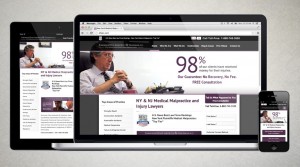Is there an aspect of your brand that is viewed negatively by consumers? If so, it’s quite possible that your brand negative could be repositioned or recommunicated to become a brand positive. Remember, much of branding and marketing is about consumer perception. How do consumers perceive your brand, and what is its position in the marketplace relative to other brands? By massaging consumer perception, you can turn threats into opportunities.
Take a brand like Listerine for example. Listerine has battled a negative brand image as a mouthwash with a terrible taste since the day it arrived on the market. In fact, the taste is so awful and the mouthwash is so strong that people have difficulty rinsing for the required 30 seconds recommended on the Listerine label.
Listerine is branded as an “antiseptic mouthwash” equating it to a product like peroxide or rubbing alcohol in the minds of consumers. There is nothing refreshing about “antiseptic mouthwash”. However, Listerine stood strong as the brand that truly cleans your mouth, rather than just masking bad breath with a minty scent like other mouthwash brands do. Listerine found it’s position in the marketplace and the marketing team behind the brand played on that perception, creating a consumer perception that told consumers to have a bacteria-free, clean mouth, you need to use Listerine. A few years ago, Listerine even launched a complete ad campaign that focused on users making it through the tough 30-second Listerine rinse twice a day and reaping the rewards of their efforts.
Another example comes from Volvo, a brand known less for style and more for safety but still having a hefty price tag. There was even reference to the unstylish appearance of Volvos in a 1990 movie starring Dudley Moore called Crazy People where a group of mental hospital patients began creating honest ad campaigns, including one for Volvo that used the tagline, “Volvo: Boxy but Good.” Of course, Volvo has made changes to the appearance of its cars in recent years, but the brand still remains positioned as the safe alternative to more trendy or stylish brands such as BMW or Lexus.
Bottom line, don’t think you need to hide the negative aspects of your brand. Instead, think about how you can turn those brand negatives into brand positives. Find opportunities where you once saw roadblocks.
Image: Flickr
Susan Gunelius is the author of 10 marketing, social media, branding, copywriting, and technology books, and she is President & CEO of KeySplash Creative, Inc., a marketing communications company. She also owns Women on Business, an award-wining blog for business women. She is a featured columnist for Entrepreneur.com and Forbes.com, and her marketing-related articles have appeared on websites such as MSNBC.com, BusinessWeek.com, TodayShow.com, and more.
She has over 20 years of experience in the marketing field having spent the first decade of her career directing marketing programs for some of the largest companies in the world, including divisions of AT&T and HSBC. Today, her clients include large and small companies around the world and household brands like Citigroup, Cox Communications, Intuit, and more. Susan is frequently interviewed about marketing and branding by television, radio, print, and online media organizations, and she speaks about these topics at events around the world. You can connect with her on Twitter, Facebook, LinkedIn, or Google+.



I think Marmite did a great job of capitalising on the fact that many people find the product horrible – it certainly got people talking about it!
I used to work for Warner-Lambert/Pfizer, the manufacturer of Listerine and I had learned that this product was originally developed as a surgical antiseptic, but what I find most relevant to your post is the information from Freakonomics that Warner-Lambert “invented” halitosis and Listerine was the cure:
“But it wasn’t a runaway success until the 1920s, when it was pitched as a solution for “chronic halitosis”, the faux medical term that the Listerine advertising group created in 1921 to describe bad breath. By naming and thus creating a medical condition for which consumers now felt they needed a cure, Listerine created a market for their mouthwash. Until that time, bad breath was not conventionally considered a catastrophe, but Listerine’s ad campaign changed that. As the advertising scholar James B. Twitchell writes, “Listerine did not make mouthwash as much as it made halitosis.” Listerine’s new ads featured forlorn young women and men, eager for marriage but turned off by their mate’s rotten breath. “Can I be happy with him in spite of that?” one maiden asked herself. In just seven years, the company’s revenues rose from $115,000 to more than $8 million.”